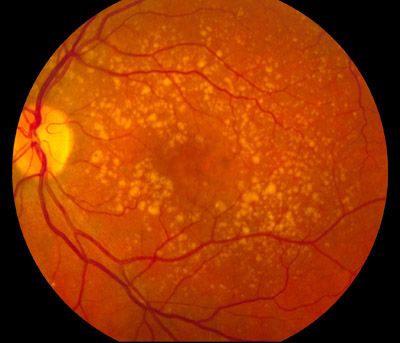Port Delivery System Preferred Over Intravitreal Injection for Patients with nAMD
In the Archway trial, 93.2% of patients preferred treatment with ranibizumab delivered via the PDS compared to only 1.3% of patients who preferred intravitreal injections.

A set of recent findings presented more evidence for the port delivery system (PDS) with ranibizumab as a meaningful, alternative treatment choice for patients with neovascular age-related macular degeneration (nAMD).
The data suggest PDS treatment was a preference for all patients assigned to PDS over previous intravitreal injections in the Archway study, although both delivery methods had high treatment satisfaction, according to the investigators.
“The overall results appear to be driven by the perceived reductions in treatment burden reported as the need for fewer treatments, requiring less time for treatment, and less discomfort,” wrote study author Gene Wallenstein, PhD, Genentech, Inc.
The objective for Wallenstein and colleagues was to evaluate treatment satisfaction for the anti-vascular endothelial growth factor (VEGF) agent delivered via PDS compared to intravitreal injections, but also garner patient preference among those assigned to PDS, in order to help inform clinical decision-making.
The phase 3 Archway trial was a randomized, active-comparator open-label clinical trial conducted at 78 sites in the United States from September 2019 until May 2020. Included patients were 50 years and older with diagnosed nAMD within 9 months of screening with a documented response to anti-VEGF therapy, said investigators.
They enrolled 418 patients from a total of 619 screened. Ultimately, 415 were included in the primary analysis and 234 were included in the secondary exploratory analysis. The patients were randomized 3:2 to PDS with ranibizumab, 100 mg/mL, with fixed refill exchanges every 24 weeks or intravitreal ranibizumab injection, 0.5mg, every 4 weeks.
Investigators measured treatment satisfaction through the Macular Disease Treatment Satisfaction Questionnaire both study arms at week 40 while patient preference was assessed using the content-validated PDS Patient Preference Questionnaire (PPPQ). Subgroup analyses assessed the impact of the experience of ocular serious adverse events on treatment satisfaction.
Participants had a mean age of 75.0 years at baseline and consisted of 234 women (59%) and 162 (41%). At week 40, the differences in overall treatment satisfaction were considered minimal for the PDS and intravitreal injection arms (mean, 68.0; 95% confidence interval [CI], 67.4 - 68.6; n = 237 and mean, 66.1; 95% CI, 64.9 - 67.3; n = 159, respectively) at a mean difference of 1.9 (95% CI, 0.7 - 3.1).
Data show a total of 234 of 248 patients (94.4%) in the PDS arm were included in the PPPQ analysis. From the primary analysis of Archway, investigators found almost all patients in the PDS cohort (218 of 234 [93.2%]) preferred treatment via PDS at week 40, while 13 patients (5.6%) had no preference for either PDS or intravitreal injections.
Moreover, investigators noted that most patients in the PDS group (172 of 234 [73.5%] had a very strong preference for PDS. Most commonly, patients cited their preference for PDS was due to fewer treatments (175 of 218 [80.3%]), less discomfort (164 of 218 [75.2%]), and less worry or nervousness (117 of 218 [53.7%]).
The subgroup analysis in patients with bilateral nAMD in the PDS group (n = 78 [33.3%] who received ≥1 anti-VEGF intravitreal injection in the fellow eye through week 40 were consistent with the findings in the entire PDS population, according to investigators. Of these patients, 72 (92.3%) preferred the PDS.
Wallenstein noted that PDS had equivalent efficacy to anti-VEGF injections in Archway, as well as pointing out the well-understood safety profile of PDS.
“Together with the results of the current analysis, these findings suggest that the PDS could be a meaningful alternative treatment option for patients with nAMD,” he concluded.
The study, “Patient Preference and Treatment Satisfaction With a Port Delivery System for Ranibizumab vs Intravitreal Injections in Patients With Neovascular Age-Related Macular Degeneration,” was published in JAMA Ophthalmology.